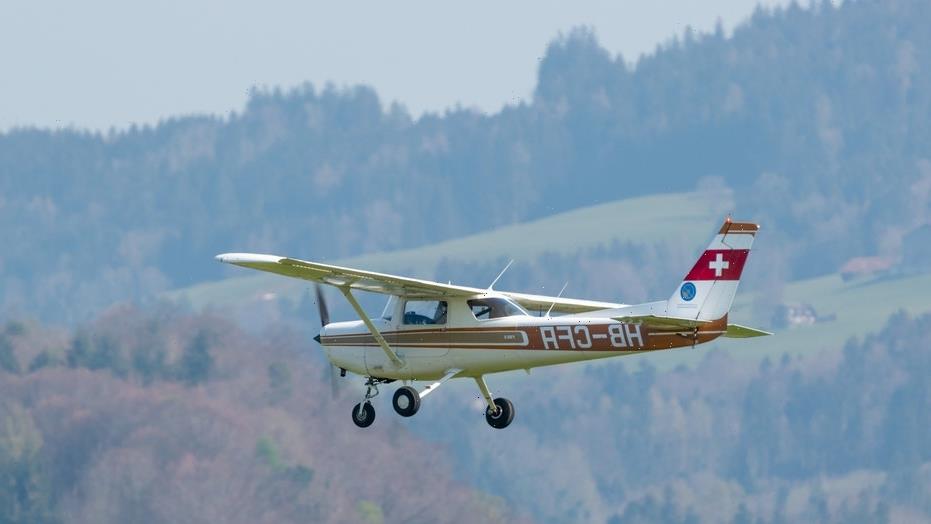Mark Pattison was in real trouble. The kind where your next move can determine whether you live or die.
It was May 23, and the former NFL wide receiver had just reached a summit of Mount Everest. But standing atop the world’s highest peak is only half the challenge; getting down can be just as difficult.
Pattison’s crew had taken too long to reach the summit and begin their descent. He was running on almost no sleep and an empty stomach. He’d gone snowblind in one eye. His oxygen was empty. Exhausted, he could only plod forward a couple steps at a time. Hundreds of feet ahead, his guide marched on, too far away to hear Pattison’s calls.
It’d be a little much to say that in that moment, Pattison drew on his experiences playing football to push him onward. But he did find something within himself to keep going, tapping the same well of inner strength that once helped him earn his way onto the roster of the 1986 Los Angeles Raiders.
“When you put your mind to something, when you have to do something that’s against all odds,” he says, “that’s when you have to force yourself. You can take yourself to levels you didn’t know you had if you have a strong purpose and you’re passionate.”
Going purely by numbers, Pattison didn’t carve a distinguished NFL career. He played for three teams — the Raiders, Rams and Saints — over the course of three years. He caught 14 passes for 170 yards over 18 regular season games and a wild card game.
Then again, going purely by the numbers, the 29,032-foot height of Mount Everest is equal to a long stroll along the beach. Numbers alone can’t measure intensity, difficulty or heart. Numbers can’t track the will needed to reach an NFL field, or to stand atop the world.
Pattison’s journey to conquer Everest began on March 30, when he left America to head to Nepal. He would be hiking to raise funds and awareness for Higher Ground, a veterans’ organization, and for his daughter Emilia and epilepsy research. And he would be tracking the entire journey on his Instagram and blog.
In Nepal, Pattison needed to prepare for the altitude and weather, and worked his way from Kathmandu up to base camp by April 12. As he climbed, he could hear avalanches rumbling in the distance, a daily reminder of the threat and power of Everest.
From base camp, Pattison hopscotched up the mountain, from camp to camp. He trained with ladders and rope, climbing 60-foot-high ice walls — a challenge at sea level, a make-or-break trial at 20,000 feet. All the while, Pattison was growing more accustomed to the altitude, building up red blood cells and helping his body understand that oxygen was now a precious commodity.
What he saw the farther he ascended awed and humbled him.
“Base Camp and Camps 1, 2 and 3 are in good shape,” he says. “Camp 4 is like Mars. You see battered tents everywhere. I was sleeping 6 feet away from a tent where people who died on May 12 were lying next to me.”
https://www.instagram.com/p/CQLq6QwlN0Z> View this post on Instagram
A post shared by Mark Pattison (@markpattisonnfl)
Pattison crammed into a tiny tent with two other people, wrapped up tight, and tried to get as much sleep as he possibly could. He and his 22-member team (11 climbers, 11 Sherpas) were scheduled to leave for the 3,000-foot climb to the summit at 12:30 a.m. local time on May 23.
In normal circumstances, climbers awaken an hour before departure to eat, get their boots and oxygen gear ready, and prepare for the ascent. Time is a crucial component of an Everest summit; the unpredictability of winds and the narrow window of daylight at the peak mean that every minute wasted is a minute closer to disaster.
On this morning, though, problems kicked up from the start, beginning with the fact that the crew didn’t get awakened until 20 minutes before departure. There was no option to delay the ascent — Pattison and crew had to go immediately, and that meant he could only scarf down a granola bar for the most important and challenging ascent of his life.
“I wasn’t organized,” he says. “I didn’t have my mind set to attack the mountain.”
Just after midnight on the 23rd, Pattison stepped out of his tent and, soon afterward, walked into the teeth of a 40 mph wind. Within an hour, tiny ice crystals kicked up by the wind sliced his left eye, leaving him snowblind in that eye.
“From the moment you step out of camp, you’re going straight up,” he says. “It does not bend or flatten. There’s no relief for somebody who hasn’t had much sleep and nothing to eat. I was sucking on candies to help with my energy, but I really struggled.”
It’s impossible to overstate the risks involved in an ascent of Everest even in the best of circumstances. Cliffs drop off thousands of feet just a few steps from rope lines. Crevasses into oblivion dot the route to the summit. Weather can trap climbers atop the mountain, freezing them where they huddle. And at more than five miles above sea level, rescue is impossible — as is the recovery of the bodies of fallen climbers. They remain there to this day, perfectly preserved, gruesome mileposts on the way up the mountain.
The steepness of the ascent, and the gnawing hunger in his gut, made Pattison consider again and again just turning around and going back to camp. He was having increasing difficulty clipping into the correct lines on the mountain, and the language barrier with his Sherpa proved nearly insurmountable.
“There are four or five lines, some from previous expeditions, and you don’t know how frayed they are,” Pattison says. “You’ve got to make sure you clip into the right one unless you want to fall off the mountain and into Tibet.”
https://www.instagram.com/p/CQGdRY0NJpo> View this post on Instagram
A post shared by Mark Pattison (@markpattisonnfl)
The route back down was equally treacherous. “My Sherpa was 200 yards ahead of me,” he recalls. “I had run out of oxygen. I could only go a couple feet at a time. I was trying to flag him down, but I was gassed.”
Fortunately, Pattison summited and returned in good weather. Had a storm whipped up while he was edging his way off the peak, he would have been in serious trouble, with no hope for rescue.
As he hiked the highest peak on the planet, passing the bodies of climbers who had fallen, Pattison summoned up something deep within himself, hiking onward for his daughter, and for the thousands following his journey from afar.
“I’m a really good climber, and I sucked that day,” he says. “I would go 10 feet, rest on a knee, go another 10 feet. But I kept tapping back into all these people that had supported me along the way. All these supporters that were in my corner, saying ‘Go, Mark.’ That’s what kept me going that 10 feet at a time, that one step at a time.”
After returning at last to camp, Pattison decided to abandon a plan to try to summit nearby Lhotse, the world’s fourth-highest peak, the next day. He would have been the first NFL player and the oldest person to reach both summits in a 24-hour span, but he decided the risk far outweighed the reward.
Even after returning to base camp, Pattison’s challenges didn’t end. COVID had rampaged through Everest base camp, and now Nepal was days away from closing its borders to all flights, incoming or outgoing. Pattison chartered a helicopter out of one of the higher camps rather than hike down, flew into Kathmandu, and got out of the country just before a long lockdown hit. And now, he’s just trying to recover from it all.
“My weight, I dropped about 25 pounds,” he says. “Physically I’m kind of a wreck. I’m trying to get back to par. The further this goes [into the past], the more I’m going to appreciate the accomplishment over the last nine years. But right now, it’s healing time.”
With the luxury of distance and safety, Pattison can look back on how he went from the NFL to the top of the world, and how the league was just a step — an important one, but only one — on the journey.
“The most gratifying part of [the NFL] is what I’m able to do 30 years later, not 30 years ago,” he says.
Still, there were lessons that stuck with him. “When I first got [to the Raiders in 1986], I remember [then-head coach] Tom Flores talking to all of us, rookies, players, undrafted free agents,” Pattison says. “Marcus Allen, Lyle Alzado, Howie Long, Jim Plunkett, over a hundred guys were there. And he says, ‘Guys, I want to remind you that you’re here to take care of business when you hit that field.’”
Only half of the men in that locker room would make the team. “I remember looking around that room, and it was a little bit like I did with going up that mountain, I had that same type of determination,” Pattison says. “I was a seventh-round draft pick. I said to myself, ‘I will be siting here at the end of the day when the final roll call comes,’ and sure enough, that’s what happened.”
Pattison has now completed the heralded Seven Summits challenge, climbing the highest peak on each continent. Everest was his last on a list that includes notable peaks such as Kilimanjaro and Denali. So what’s next? Even he doesn’t know.
“There will be a ‘next,’” Pattison laughs. “I’ve just got to reset my brain for a minute.”
_____
Jay Busbee is a writer for Yahoo Sports. Follow him on Twitter at @jaybusbee or contact him at [email protected].
More from Yahoo Sports:
Goodwill: Middleton closes as Bucks mature into contenders
Hawks’ Young set for MRI on ankle, hopes to play in Game 4
Led by Biles, USA Gymnastics names team for Tokyo Olympics
U.S. Olympic trials: McLaughlin sets 400m hurdles world record
Source: Read Full Article


